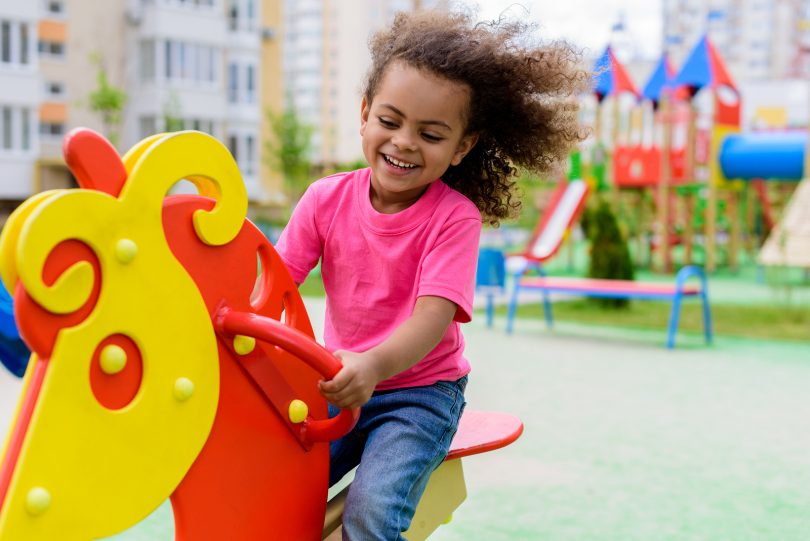Is your child playing enough? Yes, it’s really a serious question.
We’re not talking about seeing friends at school or being in front of a TV or video game. We’re not even talking about organized sports or another after-school activity.
We’re talking about play: You remember, just hanging out and playing pretend. Or grabbing bikes to ride around the neighborhood. Or playing thumb war to see who gets to pick the board game.
We’re all busy these days, down the smallest and youngest members of our family. And as adults, it can be really hard to schedule any downtime—the grown-up version of playtime.
But for kids, experts say making time for play is really important. “Something as simple as play actually teaches valuable life skills,” said Dr. April Hartman, division chief of pediatrics and adolescent medicine at the Children’s Hospital of Georgia. “When kids play together or with family members, they’re learning how to negotiate, compromise, play as a team to achieve a goal. It teaches so many things you don’t think about, like learning to share or learning to help someone.”
Even negative actions teach lessons. “If you cheat and you’re caught, how do you deal with the consequences?” said Hartman. “Or if you lose and start crying? Play helps you learn not just how to be a good winner but to be a good loser.”
According to a recent American Academy of Pediatrics clinical report, The Power of Play, play also helps cut down stress and supports safe, stable and nurturing relationships with parents or other caregivers, which kids need in order to thrive.
Prescriptive playing?
Play is now seen as so important that some experts are calling it “prescriptive playing”—as in, it should be part of a prescription for a healthy childhood.
There are four categories of play, according to the AAP:
- Object play, in which a child explores an object and learns how it works. This can include pretend play, as in using a banana as a telephone.
- Physical, locomotor or “rough-and-tumble” play, which ranges from pat-a-cake to climbing and chasing at recess.
- Outdoor play, which can be a challenge when schools don’t have recess or if a community isn’t safe for kids to play outside.
- Social or pretend play, alone or with others, which can range from working a puzzle together or playing a game to dress-up, make-believe or imaginary play. This kind of play can be led by the child (self-directed) or by an adult (adult-guided), but both kinds are important.
All of that is fine, but…
With many parents, the biggest challenge is finding the time to play. But the good news, says Hartman, is that it doesn’t necessarily have to be a lot of time. “People feel guilty if all they have is an hour to spend with their child, but that hour is golden for that child,” she said. “Whatever the time is, as long as it’s quality time—when you’re not multitasking, you’re just focusing on your child—that’s all that matters.”
For your child, maybe it’s crawling around on the floor pushing trucks around or playing with dolls. Maybe it’s going outside and throwing a basketball or riding bikes along the Greeneway. Maybe it’s playing doctor or playing house. Or maybe it’s discovering something new, like miniature golf or bowling. But whatever it is, playtime doesn’t have to be an elaborately planned activity. “Just ask your child what he or she wants to do,” said Hartman. “Then go with it.”
For example, Hartman remembers planning a week-long Disney vacation for her eight-year-old goddaughter, but when Hartman asked her what she wanted to do during their time together, she didn’t want to stand in long lines in the hot sun. “She wanted to stay at my house and go swimming, and she wanted to paint with me,” said Hartman, who is also an artist. “It was great for both of us.”
Of course, playdates with friends are also important, and it’s great to invite friends along on some of these activities. But playtime with parents or caregivers also gives a chance for some important conversations. “It’s hard to try to get a kid to sit down and talk to you,” said Hartman. “But if you can find a way to bring up issues during playtime, it can give you an opportunity to reestablish that communication and hear your child’s thoughts and ideas and questions.”
Screen time = playtime?
Screen time can even be a part of play, if it’s done right. But it’s not both of you sitting in a room, each focused on your own device.
“Make sure you’re connecting,” said Hartman. “If you’re watching a movie together, sharing popcorn, laughing and talking, that’s playtime.”
If your child’s playtime right now is all digital, though, you probably should encourage him or her to diversify. Start small, say with a half hour of playtime three times a week, where you and your child are doing something new or different. “Maybe it’s short, but make that time sacred, and you’ll find you both start looking forward to that time,” Hartman said.
Playtime for parents
Finally, as parents, make sure you’re carving out some playtime for yourselves too.
For example, schedule date nights with your partner or spouse regularly to give yourselves time to reconnect as a couple and not simply parents.
Take time too to do hobbies and activities you enjoy, said Hartman. “If you look at burnout in the workforce, one of the biggest things that’s emphasized is playtime for adults, taking the time to do something you enjoy doing.”
The other benefit of doing that? “When children see parents taking time out to do something they enjoy, it teaches them to do that too both now and as adults,” said Hartman.




